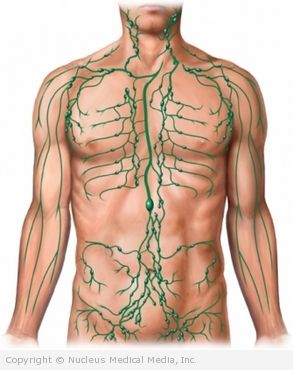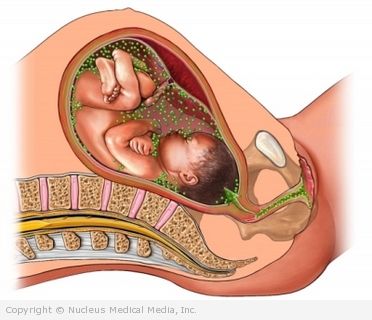Syphilis – Definition
Syphilis is a bacterial infection. It is spread by sexual contact. If left untreated, it can cause brain, nerve, tissue damage, and death.
Syphilis – Causes
Syphilis is caused by the bacterium, Treponema pallidum. It is passed through direct contact with a syphilis lesion, which can happen through:
- Vaginal, anal, or oral sexual contact with an infected person
- A pregnant woman who passes the infection to her unborn baby (called congenital syphilis)
- Blood exposure, such as through illegal drug use, or very rarely, blood transfusions
Syphilis – Risk Factors
Factors that increase your chance of syphilis include:
- Age: 15-34 years
- Having sex with a person infected with syphilis
- Having multiple sex partners
- Not using a latex condom during vaginal, anal, or oral sex (in a relationship that is not mutually faithful or where syphilis status is unknown)
- Touching a syphilis lesion
- Past or current sexually transmitted disease
Syphilis – Symptoms
There are four stages of syphilis in adults:
- Primary stage
- Secondary stage
- Latency stage
- Tertiary stage
Primary (First) Stage
Single or multiple lesions will appear. This can happen within 10-90 days of exposure. They occur in the area where the infection was originally passed. Common sites include the genitals, rectum, tongue, inside of the mouth, or lips.
At first the lesion is raised or blister-like and painless. It gradually breaks down to form an ulcer. The ulcer is painless at first. It usually has raised edges and is firm and round. The ulcers usually last for 1-5 weeks. They will heal on their own.
Sometimes these lesions acquire a second bacterial infection. This can also become painful. During this time, you may notice enlarged lymph nodes in your groin. Without treatment, the infection may move to the secondary stage. This can happen even if the ulcers are no longer visible.
Secondary Stage
This stage develops from several weeks to months after infection. It starts with a pink or red-colored rash that usually does not itch. It often occurs with a sore throat, swollen glands, headache, and other flu -like symptoms. It may appear on one or more areas of the skin. The rash usually lasts 2-6 weeks and may appear as the following:
- Prickly heat
- Small blotches or scales
- Moist warts in the groin area
- Slimy white patches in the mouth
- Sunken dark circles the size of a nickel or dime
- Rashes on the palms and soles
- Fever
- Fatigue
- Achiness
- Swollen lymph nodes throughout the body
Latency (Resting) Stage
In this stage the infection persists but there are no symptoms. This may last for many years. It may or may not progress to the third stage. Blood tests for syphilis will be positive during this stage. This stage is then further divided into the following:
- Early latency — often lasts for the first year after the first two stages are done. This is the time when most syphilis infections are spread to others.
- Late latency — people are usually not very infectious during this stage. However, a pregnant woman can pass the syphilis infection to her developing baby during this stage.
Tertiary (Third or Late) Stage
This stage may begin months or even years after the initial infection. This stage has become very rare in developed countries. In this stage, the bacterium begins to damage:
- Brain and nerves
- Eyes
- Heart and blood vessels
- Liver
- Bones and joints
Damage can be serious enough to cause death. Symptoms include the following:
- Small bumps (called gummas) on the skin, bones, or internal organs
- Heart and blood vessel problems
- Blindness
- Central nervous system damage, including weakness, numbness, trouble walking, difficulty with balance, memory problems, and loss of bladder control
Congenital Syphilis
This type occurs when a pregnant women passes syphilis to her unborn child. This is now rare in developed countries. Syphilis testing is part of routine prenatal care. This can cause deafness and problems with the teeth and nose for the child.
Syphilis – Diagnosis
The doctor will ask about your symptoms and medical history. A physical exam will be done. The doctor will look for lesions or rashes on the body and genital area. In addition:
- Material from infectious lesions may be examined under a microscope.
- A blood test can detect antibodies to syphilis.
- If problems with the nerves are present, a spinal tap may be done. This process uses a needle to remove fluid from the spine. It can check the fluid around the brain and spinal cord.
Syphilis – Treatment
Penicillin kills the bacterium and prevents further damage. It will not repair any damage already done. In general:
- One dose will usually cure a person who has had syphilis for less than a year.
- If syphilis has been present for more than a year, more doses are needed.
- A baby born with syphilis needs daily penicillin treatment for at least 10 days.
People who are allergic to penicillin can either be desensitized or at times can be given alternate antibiotics, such as:
- Doxycycline
- Ceftriaxone
- Tetracycline
- Azithromycin
If you have syphilis, avoid sexual relations until treatment is complete and the infection is cleared up. All sex partners should be notified. They will need to get treated as well.
Syphilis – Prevention
Syphilis lesions can be hidden in the vagina, rectum, or mouth. It may not be obvious that a sex partner has syphilis. The following practices can help prevent syphilis:
- Abstain from vaginal, anal, and oral sex
- Have a mutually monogamous sexual relationship with an uninfected partner
- Use a latex condom during vaginal, anal, and oral sex, especially if you have sexual contact with a partner whose syphilis status you are not certain of
- Have regular checkups for sexually transmitted diseases


